Washington D.C., the capital of the United States, is a globally significant destination known for both its political power and cultural richness. The city stands out with its historical monuments, museums, iconic buildings, and vast green spaces, hosting many sites that shed light not only on American history but also on world history. From the White House to the Capitol Building, from the Lincoln Memorial to the Smithsonian museums, the wide range of places to visit offers both an educational and impressive experience for visitors.
Washington D.C. reflects the advantage of being a planned city, offering easy transportation and an orderly urban structure. The National Mall, the area of National Monuments and Museums, is located in the heart of the city and allows access to many important sites by walking. The city offers rich content not only for those interested in political structures but also for visitors interested in art, nature, and architecture. With the blooming cherry blossoms in spring, the city turns into an open-air exhibition and promises unforgettable memories for travelers of all ages.
1. The White House – The official residence and workplace of the President of the United States. Can be photographed from outside.
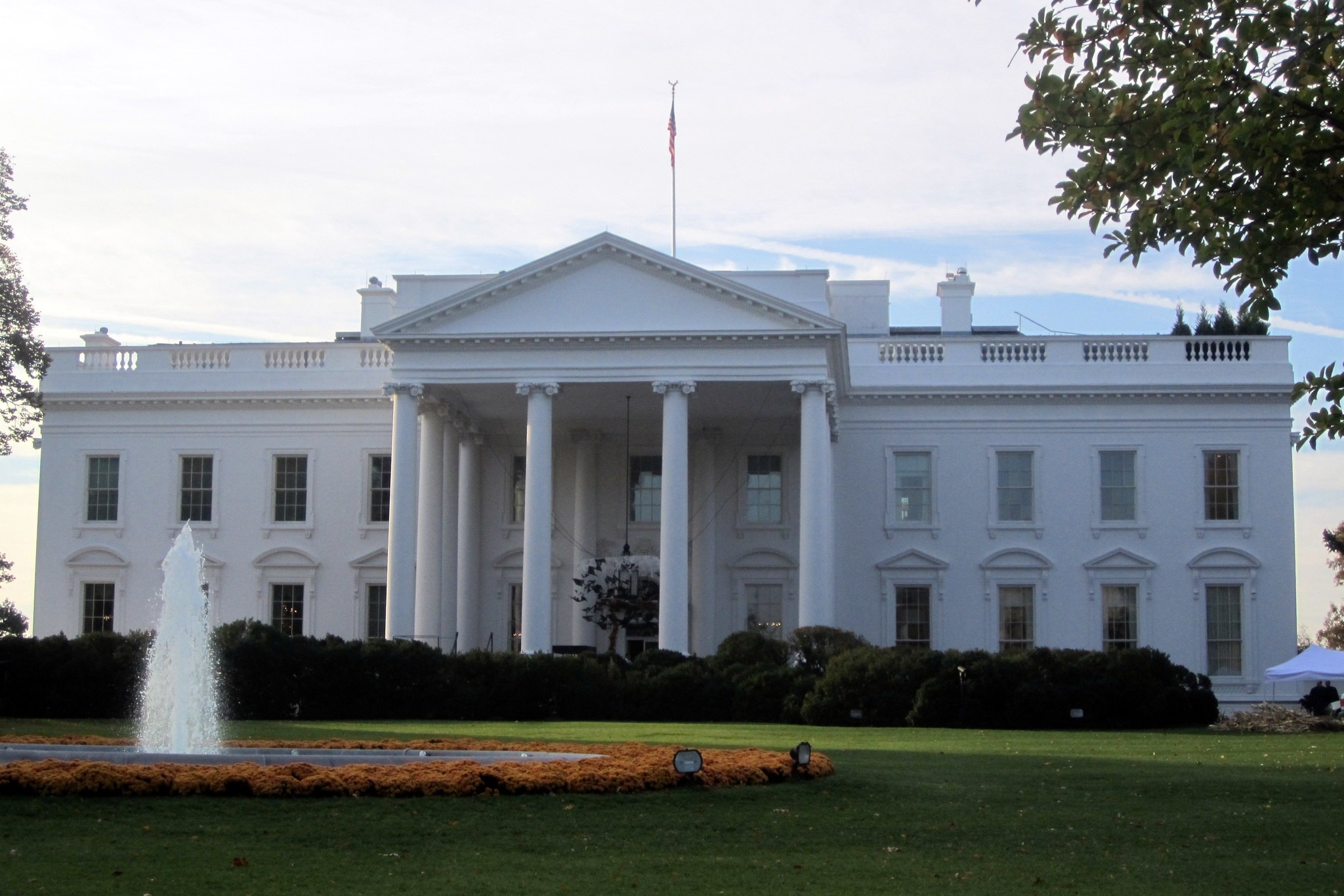
The White House is an iconic building that serves as both the official residence and the executive office of the President of the United States. Built in 1800, it has housed every U.S. president since then. Recognized for its neoclassical architecture, white stone façade, and columned exterior, the White House is not just a residence but also a significant symbol where national decisions are made. Located on Pennsylvania Avenue, it is one of the most visited and photographed sites in Washington D.C.
Although visitors are offered an impressive view of the White House from the outside, interior tours are limited and only possible through special advance requests. U.S. citizens can arrange tours through their congressional representatives, while foreign tourists are generally not eligible for these tours. The nearby White House Visitor Center is an ideal stop for those who want to learn more about the building and view exhibits related to its history. With its political and historical significance, the White House is one of the must-see places in Washington D.C.
2. United States Capitol – The center of the American legislative branch. Guided tours are available.
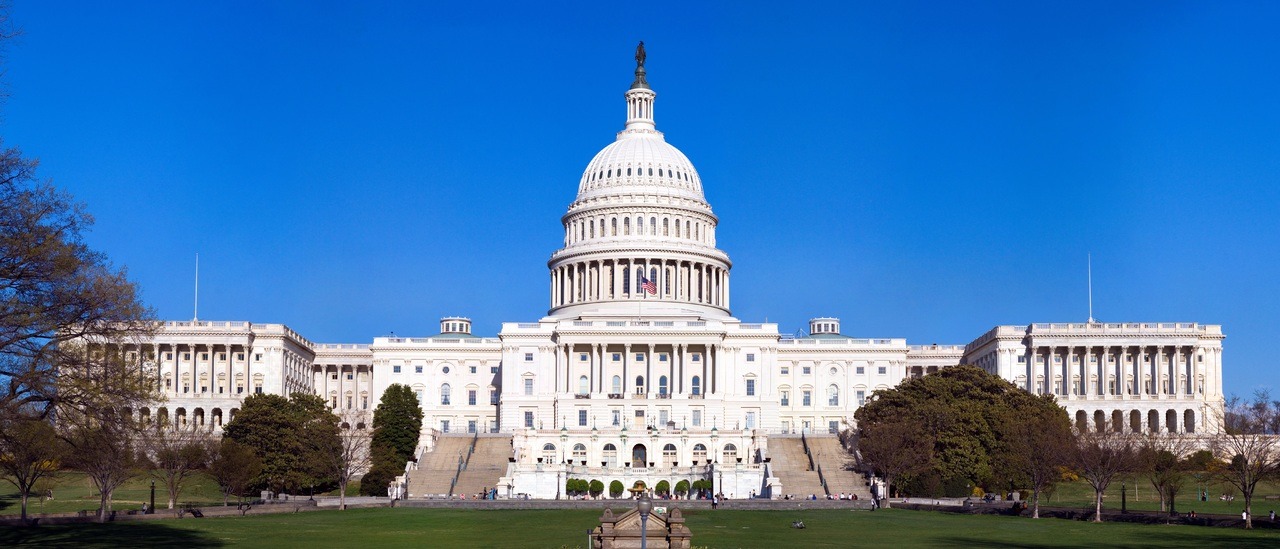
The United States Capitol is the building where the legislative branch of Congress operates and is considered the heart of American democracy. Located on Capitol Hill, this magnificent structure houses the Senate and the House of Representatives. Construction began in 1793, and the building was expanded over the years. With its massive dome, columns, and classical architecture, the Capitol is one of the most recognized symbols of Washington D.C. It is not only a government building but also a center where American history and politics have taken shape.
Visitors can tour the Capitol free of charge through the Capitol Visitor Center. The guided tours offered here provide detailed information about the building’s architecture, history, and the legislative process. The tour typically includes the rotunda under the dome, historic chambers, and exhibition areas. Tours may require advance reservations, and security procedures are very strict. The United States Capitol offers a fascinating experience not only for those interested in politics but also for those curious about history, architecture, and culture.
3. Lincoln Memorial – A striking monument built in memory of Abraham Lincoln.

The Lincoln Memorial is an impressive and symbolic structure built to honor Abraham Lincoln, the 16th President of the United States. Completed in 1922, the memorial stands out with its architecture resembling a Greek temple. Inside is a massive seated statue of Lincoln, reflecting both his determination and humble character. The walls of the memorial feature the texts of Lincoln’s most famous speeches, including the Gettysburg Address and his Second Inaugural Address.
Located in the National Mall area of Washington D.C., at the western end of the Reflecting Pool, the memorial is not only a historical structure but also a symbol of freedom and unity for the American people. It gained profound significance for the American civil rights movement when Martin Luther King Jr. delivered his “I Have a Dream” speech there in 1963. Open to visitors at all hours, the memorial is striking both during the day and when illuminated at night.
4. Washington Monument – A massive obelisk erected in honor of George Washington.
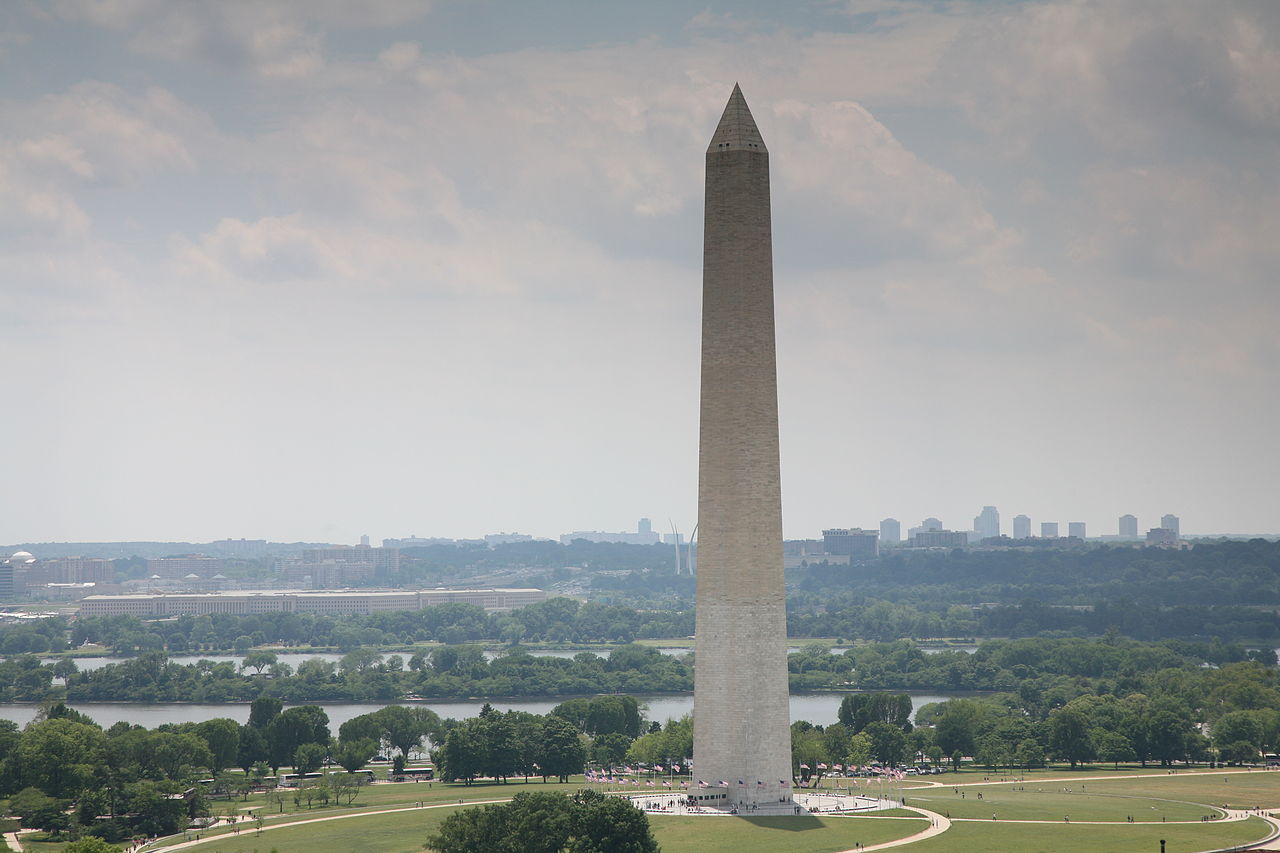
The Washington Monument is one of the most iconic structures in the capital, erected in honor of George Washington, the first President of the United States. Standing at 169 meters, this marble, granite, and sandstone obelisk was one of the tallest structures in the world for many years and was completed in 1884. Built in the style of an Egyptian obelisk, the monument draws attention with its simplicity and grandeur. With no inscriptions or decorations, it symbolizes George Washington’s modest character and humble leadership.
Located in the center of the National Mall, the Washington Monument is visible from all around the city and is a must-visit point for tourists. Visitors can take an elevator to the top of the monument and enjoy panoramic views of Washington D.C. Admission is free, but advance reservations are recommended during busy times. Impressive by day with its stature and by night with its illumination, the Washington Monument is a powerful symbol of respect for one of the founding figures of American history.
5. Smithsonian Museums – Numerous museums with free admission. Highlights include:
The Smithsonian Museums are institutions located in Washington D.C., forming the world’s largest museum, education, and research complex. Managed by the Smithsonian Institution, this network includes more than 20 museums, a zoo, and various research centers. All museums are open to visitors free of charge and are visited by millions of people each year. These museums provide knowledge across a wide range of subjects, including history, art, science, culture, and technology.
Some of the most prominent museums within the Smithsonian include:
National Museum of American History

The National Museum of American History is a comprehensive museum that sheds light on the political, cultural, technological, and social history of the United States. Operating under the Smithsonian Institution, the museum opened in 1964 and is located on the National Mall in Washington D.C. It features an extensive collection reflecting the U.S. independence process, presidential history, wars, industrial development, and popular culture. Important objects from American history, everyday items, and historical documents are presented to visitors here.
Among the museum’s most notable pieces are George Washington’s military uniform, items used by Abraham Lincoln, documents written by Thomas Jefferson, and one of the original versions of the American flag known as the “Star-Spangled Banner.” The museum also hosts exhibitions on various topics, from American cuisine and music to toys and inventions. Through interactive exhibit areas, visitors not only learn history but also deeply experience the American way of life. This museum offers an unforgettable exploration of U.S. history for both Americans and foreign tourists.
National Air and Space Museum
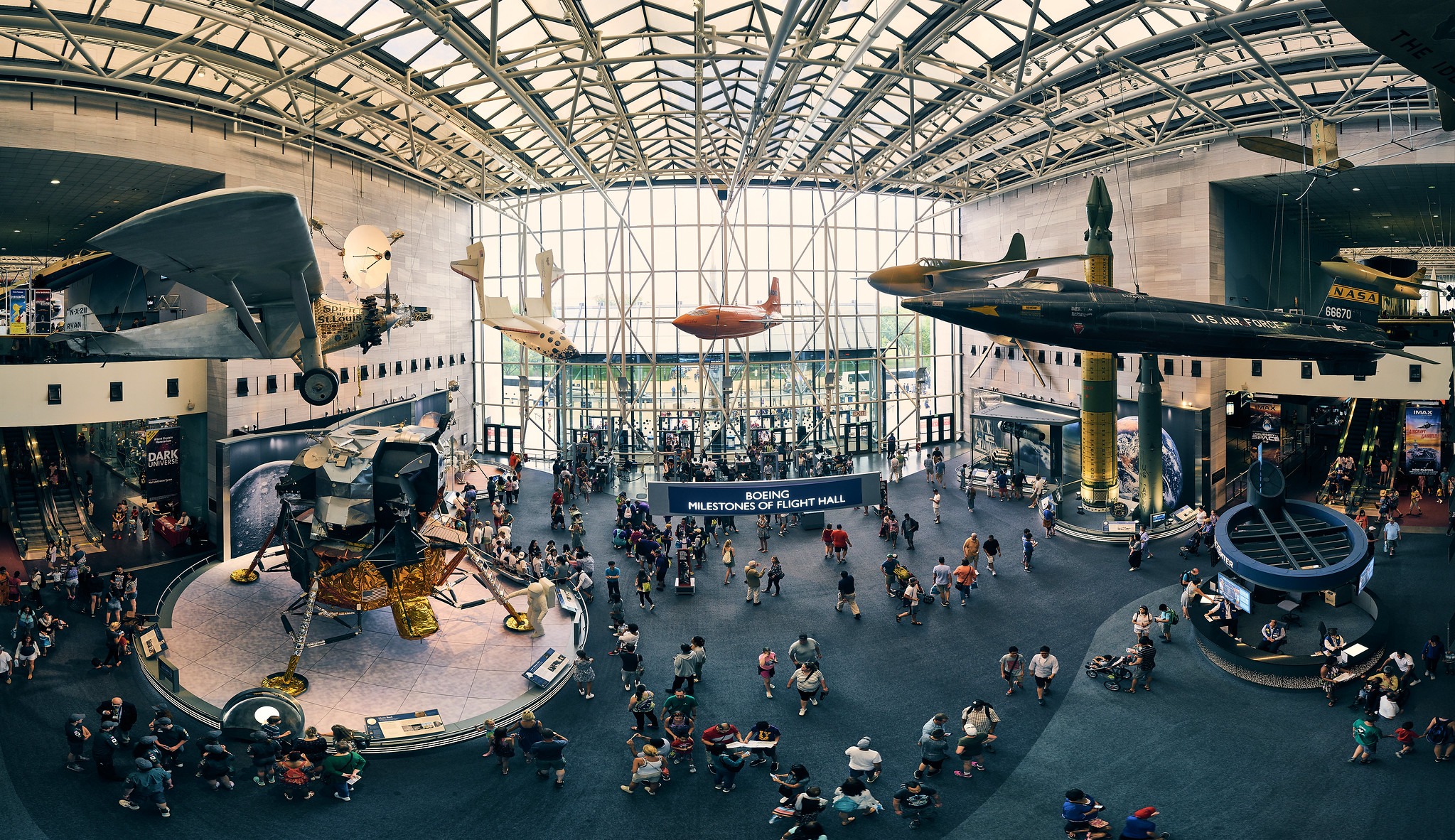
The National Air and Space Museum, operating under the Smithsonian Institution, is the museum with the largest collection of aviation and space artifacts in the world. Located on the National Mall in Washington D.C., the museum opened in 1976 and welcomes millions of visitors each year. By presenting humanity’s journey into the sky and space in chronological order, the museum offers an inspiring experience from both scientific and historical perspectives. Admission is free, and it is an educational as well as impressive destination for both adults and children.
Among the museum’s most notable exhibits are the Wright brothers’ first airplane, the Wright Flyer (1903), the Apollo 11 command module Columbia, the Spirit of St. Louis aircraft, and samples of moon rocks. In addition, rocket engines, space shuttles, military aircraft, civil aviation vehicles, and interactive simulations offer visitors a wide variety of displays. The museum presents both historical flight achievements and NASA’s space explorations in a comprehensive manner. For aviation and space enthusiasts, it is a unique source of information and serves as a visual and physical archive of scientific progress.
National Museum of Natural History

The National Museum of Natural History, operating under the Smithsonian Institution in Washington D.C., is one of the most visited natural history museums in the world. Opened in 1910, this museum houses millions of objects related to the natural sciences. Admission is free, and it offers an educational and impressive environment for both children and adults. It is known for its extensive collections on natural history, living organisms, geology, and human evolution.
Among the museum’s most striking exhibits are the Hope Diamond (the world’s most famous blue diamond), massive dinosaur skeletons, fossils, marine creatures, insect collections, and the human evolution exhibit. There are also interactive displays that allow visitors to experience ocean ecosystems and rainforests. The museum is an important center for making scientific research accessible to the public and is especially notable for its fun discovery areas designed for children. The National Museum of Natural History offers an unforgettable visit that reveals millions of years of nature’s evolution.
National Museum of African American History and Culture
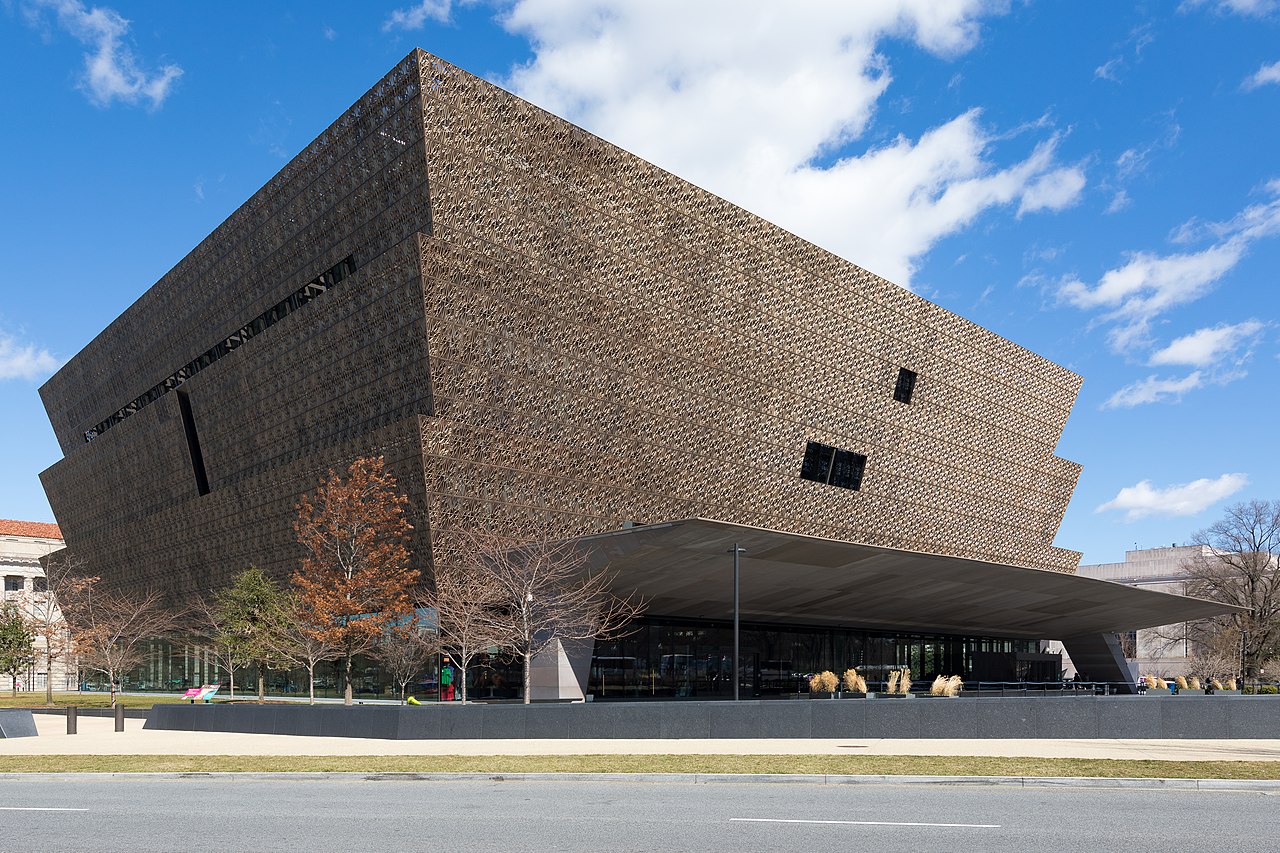
The National Museum of African American History and Culture (NMAAHC), located on the National Mall in Washington D.C., was opened in 2016 and comprehensively presents the history, culture, and art of African Americans. Affiliated with the Smithsonian Institution, this museum spans 400,000 square feet and offers a rich experience to visitors with a collection of approximately 40,000 artifacts. The museum thoroughly addresses the challenges, struggles, and achievements of African Americans from the era of slavery to the present day.
The museum’s exhibitions highlight themes such as slavery and the fight for freedom, the segregation era, the civil rights movement, and contemporary cultural contributions. Visitors can see iconic objects such as the dress worn by Rosa Parks during her bus protest, the casket of Emmett Till, Chuck Berry’s red Cadillac, and Louis Armstrong’s trumpet. Permanent exhibitions like “Slavery and Freedom,” “Defending Freedom, Defining Freedom: Era of Segregation,” “Musical Crossroads,” and “Cultural Expressions” offer visitors a deep historical perspective.
The museum is open seven days a week and admission is free; however, due to high demand, timed-entry passes are required in advance. Visitors can also relax at the “Sweet Home Café” inside the museum, which offers flavors from African American cuisine. NMAAHC is more than just a museum—it is a significant stop for anyone who wants to understand America’s multilayered history and cultural diversity.
6. Thomas Jefferson Memorial – Dedicated to Thomas Jefferson, the third President of the United States.
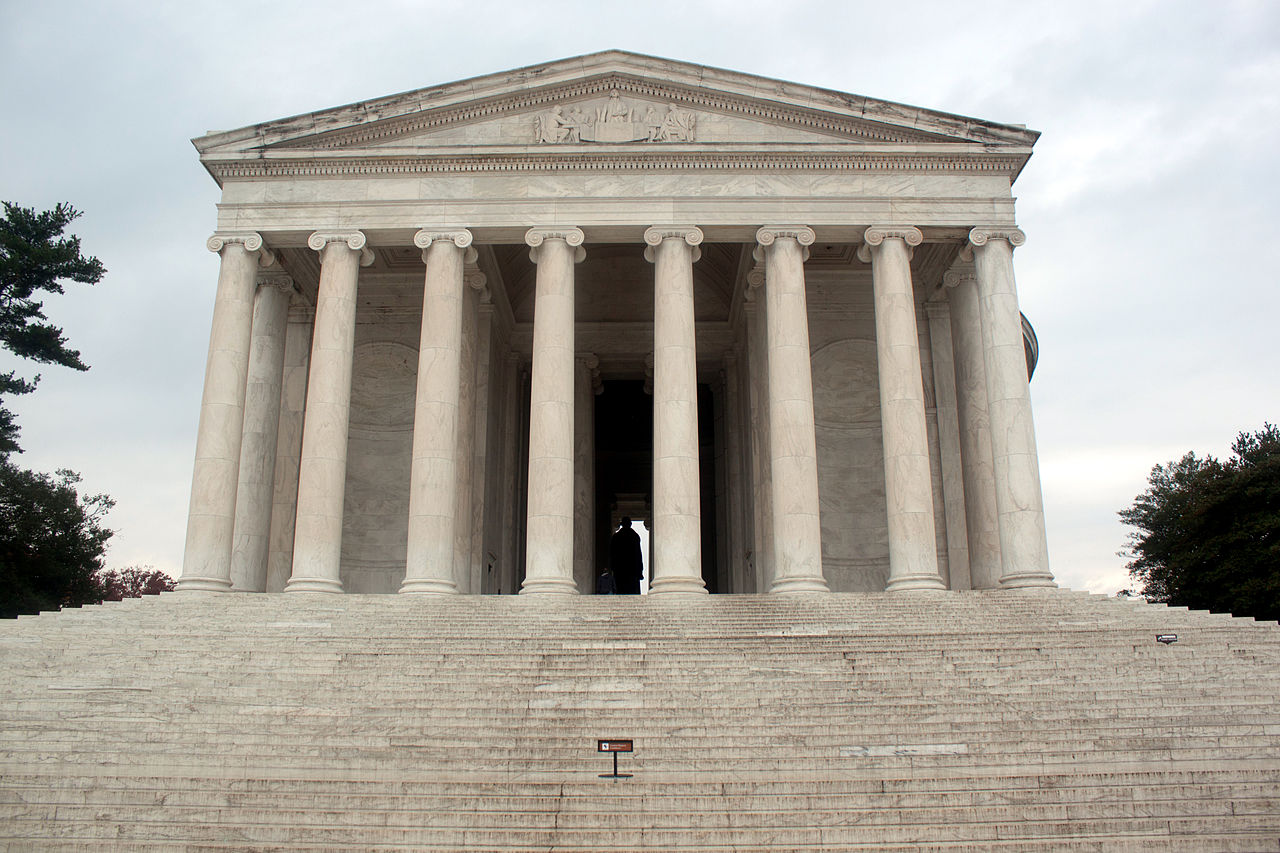
The Thomas Jefferson Memorial is a grand monument dedicated to Thomas Jefferson, the third President of the United States and the principal author of the Declaration of Independence. Located along the Tidal Basin in Washington D.C., the memorial features neoclassical architecture inspired by ancient Roman temples, with a domed structure. Completed in 1943, the interior of the memorial houses a large bronze statue of Jefferson. The surrounding walls are inscribed with Jefferson’s quotes on liberty, education, and democracy.
The location of the memorial offers a stunning view, especially in spring when the cherry blossoms are in bloom. The Jefferson Memorial holds deep significance not only for its architectural beauty but also as a symbol of freedom of thought, human rights, and republican principles in American history. Open to visitors at all hours, the memorial provides a captivating atmosphere, particularly at sunset and under nighttime lighting. It is an essential stop not only for history enthusiasts but also for nature lovers and photography fans.
7. National Mall – A large open area that houses monuments and museums.
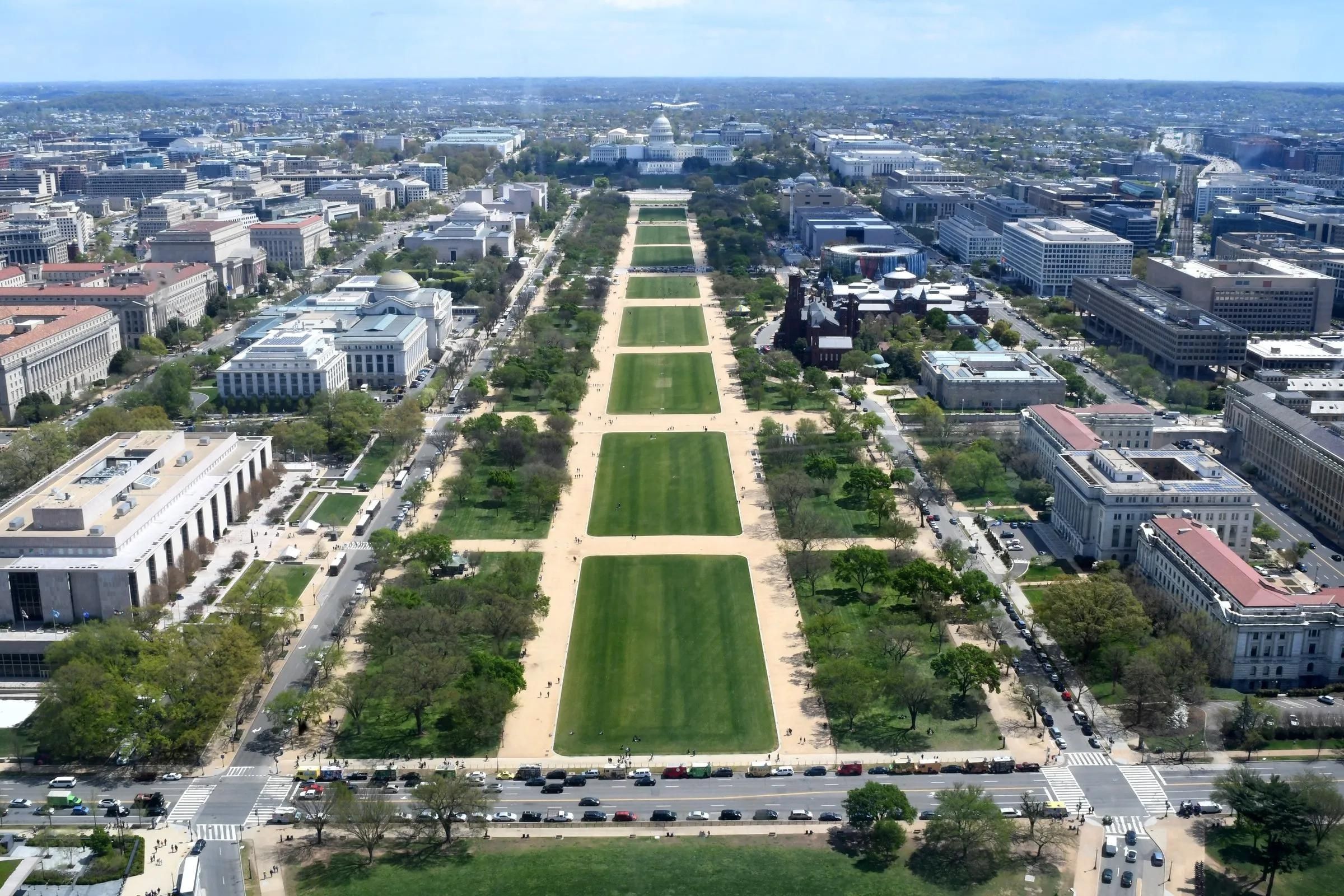
The National Mall is a large, rectangular open space located in the heart of Washington D.C., bringing together some of the most important monuments and museums in the United States. Bounded by the U.S. Capitol to the east and the Lincoln Memorial to the west, the area stretches approximately 3 kilometers. In between are the Washington Monument, the Reflecting Pool, and numerous historic structures. The National Mall also serves as a central location surrounded by many of the Smithsonian Institution’s museums.
It is not only known for its architectural and historical landmarks but also functions as a vibrant public space for outdoor events, walking paths, and festivals. Independence Day celebrations, civil rights marches, and various cultural events are held here. Surrounded by parks and gardens, the National Mall offers an ideal walking route for both local and international visitors. For anyone wishing to witness American history and culture in person, this area is one of the essential hubs of Washington D.C.
8. Vietnam Veterans Memorial – A wall inscribed with the names of soldiers who lost their lives in the war.
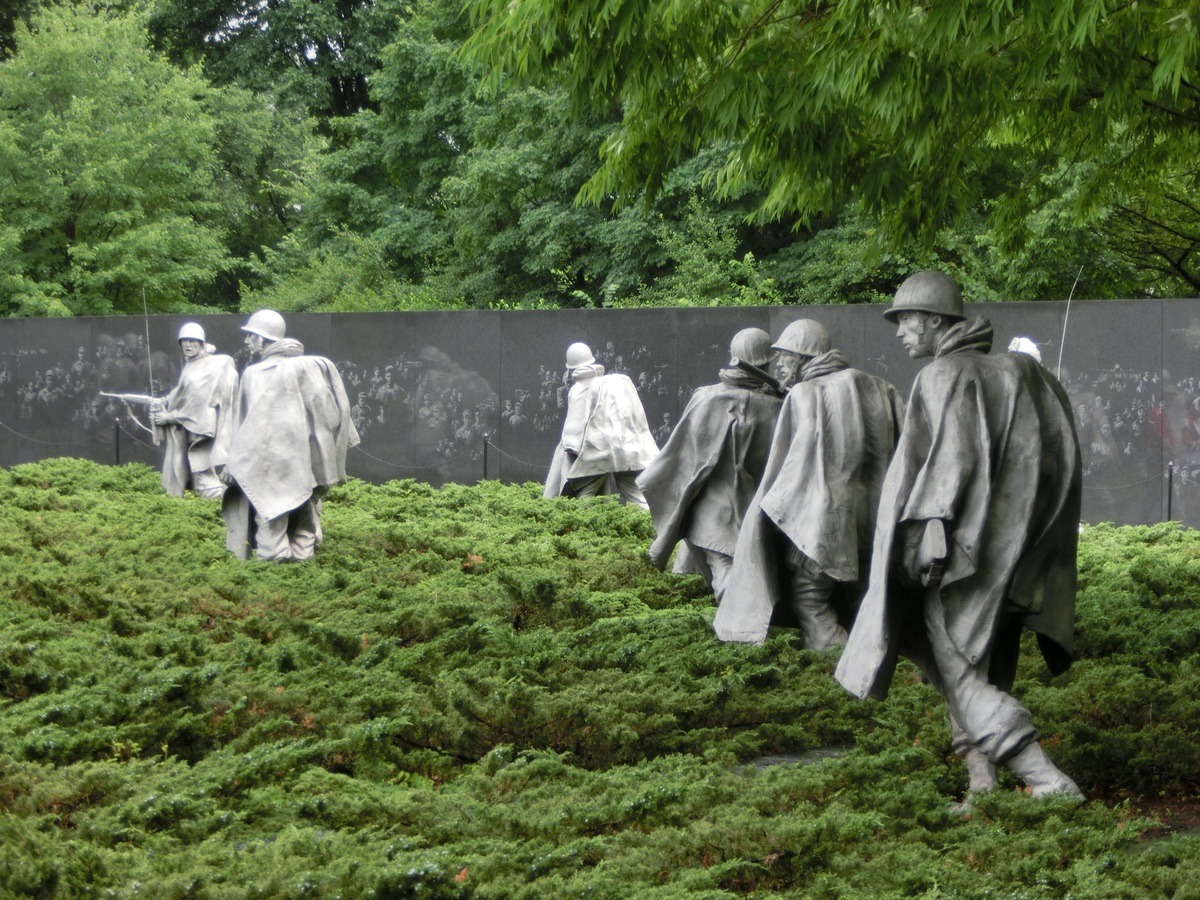
The Vietnam Veterans Memorial is a simple yet deeply meaningful monument built to honor the memory of American soldiers who died or went missing during the Vietnam War. Opened in 1982, this memorial is located in the National Mall area of Washington D.C., near the Lincoln Memorial. Made of black granite and designed in a V-shape that sinks into the ground, the long wall bears the names of more than 58,000 soldiers. The reflective surface of the wall allows visitors to see their own reflections alongside the names, creating a powerful symbolic experience.
The memorial conveys the dramatic impact of war and the emotional weight of loss in a quiet but powerful way. Visitors often search for the name of someone they knew, touch the inscriptions, or leave items such as flowers and flags in remembrance. The Vietnam Veterans Memorial serves not only as a tribute to the fallen soldiers but also as a space reflecting the societal effects of the war. Its design and minimalist aesthetics are considered one of the most striking examples of modern architecture among war memorials.
9. Korean War Veterans Memorial – A striking memorial dedicated to Korean War veterans.
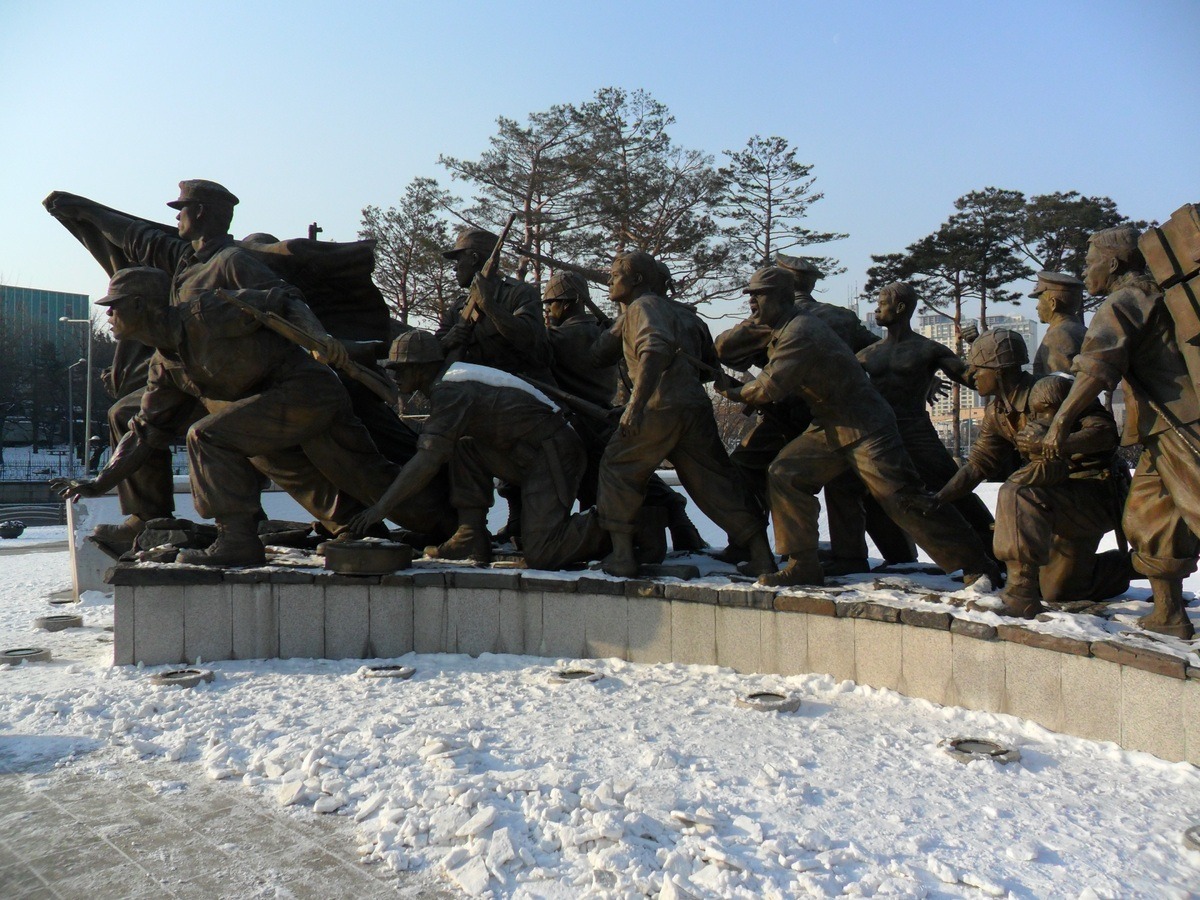
The Korean War Veterans Memorial is a meaningful monument built in honor of American soldiers who served in the Korean War between 1950 and 1953. Located in the western part of the National Mall in Washington D.C., near the Lincoln Memorial, it was opened in 1995. One of the most striking features of the memorial is a group of 19 stainless steel statues of soldiers walking among bushes. Representing different military units, these figures symbolize the harsh conditions of the war and the determination of the soldiers.
Behind the statues, a black granite wall displays the faces of soldiers, pilots, nurses, and other personnel who served during the war. The inscription “Freedom is not free” adds to the emotional impact of the memorial with a powerful message. The surrounding pool and commemorative wall create an atmosphere of quiet respect and reflection. The Korean War Veterans Memorial offers visitors both historical awareness and a deep sense of the human impact of war.
10. Martin Luther King Jr. Memorial – A grand statue dedicated to the civil rights leader.

The Martin Luther King Jr. Memorial is an impressive monument built in honor of Dr. Martin Luther King Jr., the leader of the American civil rights movement. Located along the Tidal Basin in Washington D.C., near the Jefferson and Lincoln memorials, the monument was opened to the public in 2011. At its center stands a 9-meter-tall statue of King emerging forward from a stone, known as the “Stone of Hope,” inspired by a line from his “I Have a Dream” speech.
Surrounding the monument are walls inscribed with 14 significant quotes from King’s speeches and writings. These words reflect his dedication to nonviolent resistance, equality, justice, and human rights. The memorial delivers a powerful message not only through its architecture but also through its meaning, prompting deep reflection among its visitors. The Martin Luther King Jr. Memorial is one of the most meaningful landmarks in Washington D.C., symbolizing respect for both historical and human values.
11. Tidal Basin – A pond and walking area famous for its cherry blossoms.
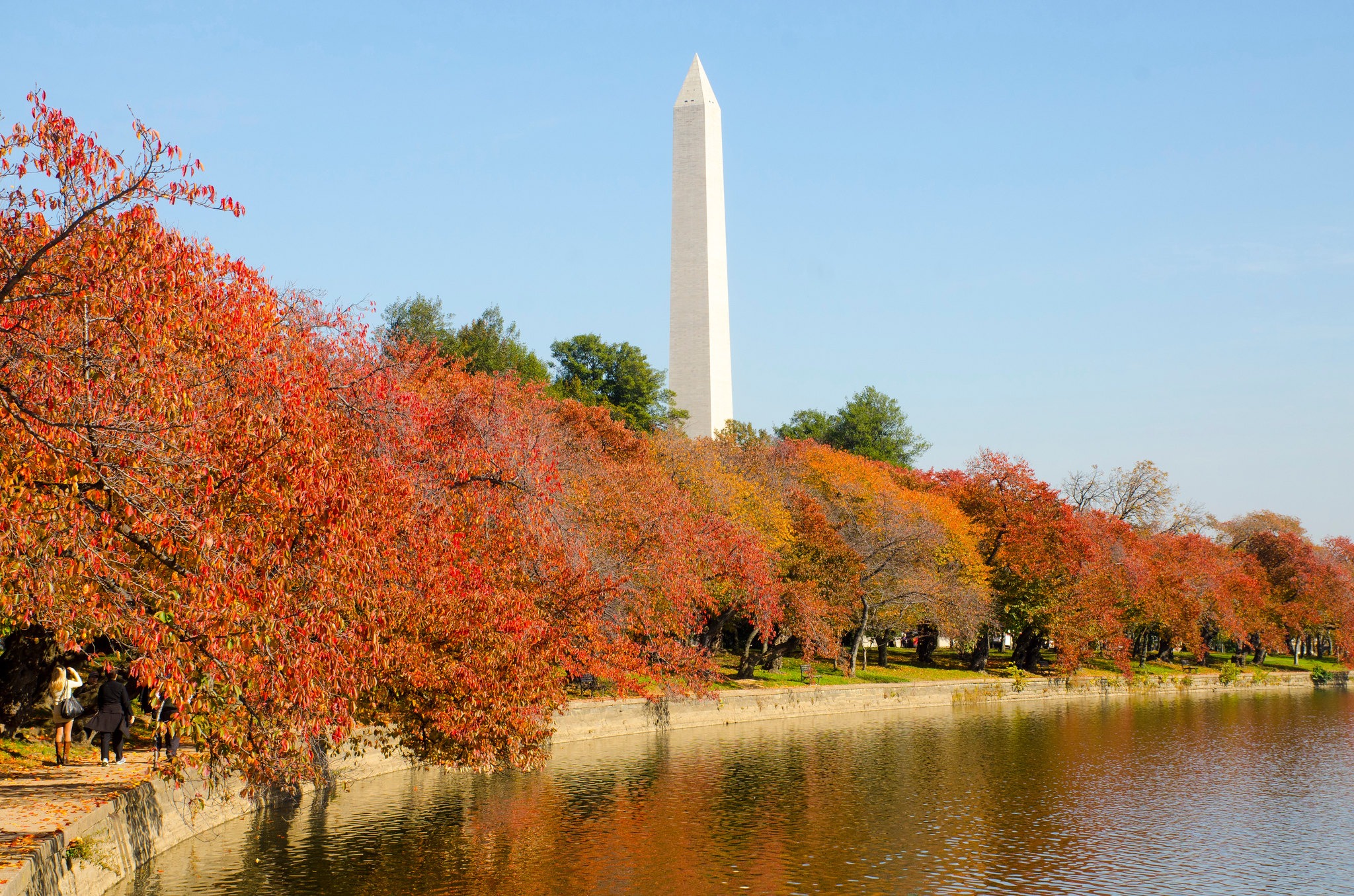
The Tidal Basin is a partially man-made pond and popular walking area located in the southwestern corner of the National Mall in Washington D.C. Connected to the Potomac River, this body of water is world-renowned for its cherry blossoms, which bloom especially in the spring. Thousands of cherry trees, gifted by Japan in 1912, create a stunning visual display each year between late March and early April. The National Cherry Blossom Festival held during this time attracts both locals and tourists.
The area surrounding the Tidal Basin is filled with walking and biking paths, making it one of the most peaceful and scenic spots in the city. It is also home to important monuments such as the Jefferson Memorial, the Martin Luther King Jr. Memorial, and the Franklin Delano Roosevelt Memorial. This allows visitors to enjoy nature while also experiencing American history. At sunset, with reflections on the water and the silhouettes of cherry trees, the Tidal Basin becomes a must-see enchanting location in Washington D.C.
12. Arlington National Cemetery – A memorial cemetery dedicated to U.S. military history.
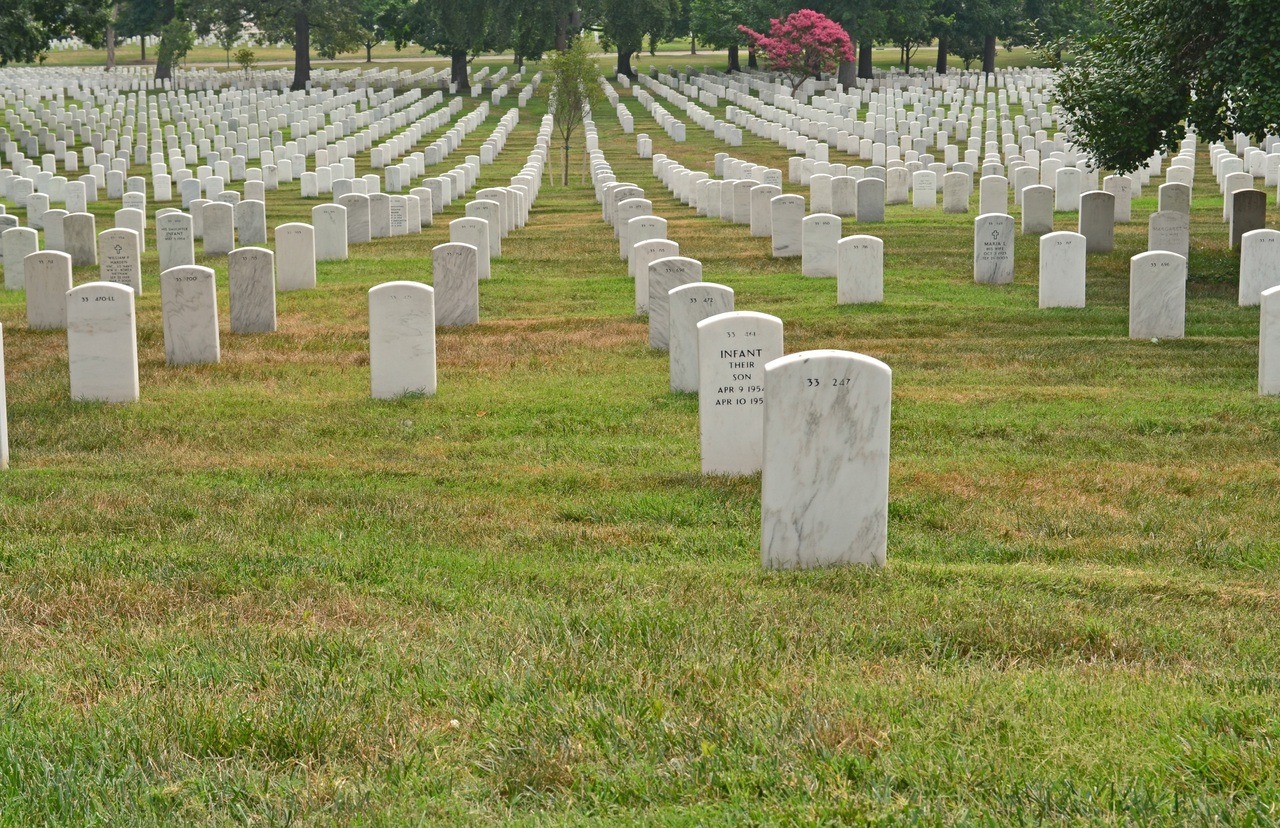
Arlington National Cemetery is one of the most sacred and historic cemeteries in the United States. Located in the state of Virginia, just across the Potomac River outside Washington D.C., the cemetery was established in 1864 during the American Civil War. It is the final resting place for hundreds of thousands of soldiers who served in the U.S. military, as well as statesmen, presidents, and national heroes. The vast grounds, lined with white marble headstones, offer a disciplined and striking appearance.
One of the most well-known sections of the cemetery is the Tomb of the Unknown Soldier, a monument dedicated to unidentified soldiers and guarded around the clock by members of the military. Also located here is the grave of President John F. Kennedy, marked by an eternal flame. For visitors, Arlington National Cemetery holds deep emotional and historical meaning, serving as a symbol of America’s military heritage, sacrifice, and national memory. Guided tours and visitor centers provide a detailed understanding of the cemetery’s history and significance.
13. Georgetown – A historic neighborhood known for its old streets, shopping, and dining spots.
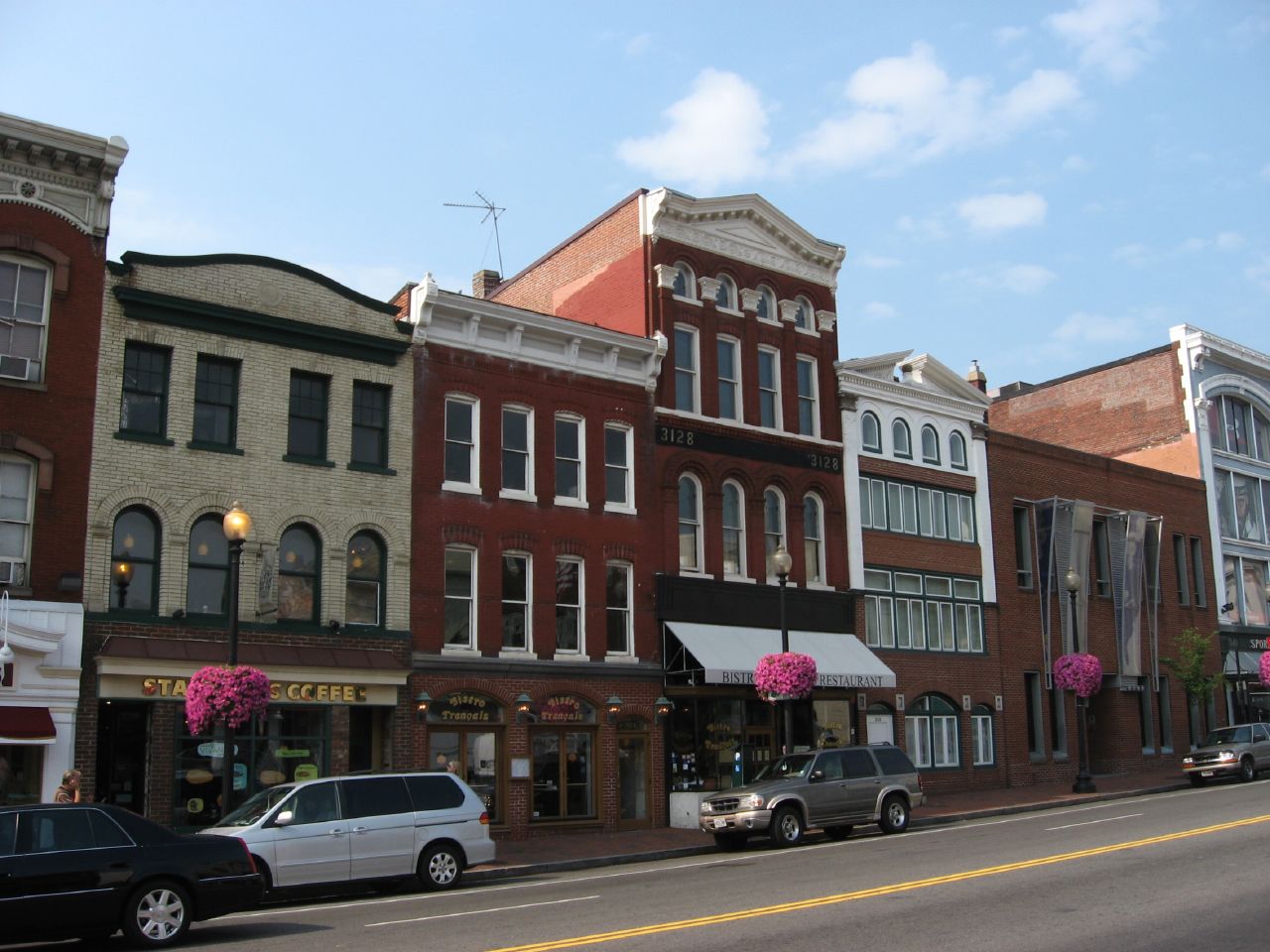
Georgetown is known as one of the oldest and most elegant neighborhoods in Washington D.C. With its 18th-century cobblestone streets, historic homes, and narrow alleys, this district carries the traces of the past into the present. Located along the Potomac River, Georgetown offers a pleasant walking experience with its historic atmosphere. The neighborhood is also home to Georgetown University, adding an intellectual and cultural vibe to the area.
Georgetown stands out not only for its history but also for its shopping, dining, and entertainment options. Boutique shops, antique stores, designer boutiques, and well-known brands along M Street and Wisconsin Avenue offer attractive choices for shopping enthusiasts. The area also features cafés, gourmet restaurants, and famous cupcake shops. In the evenings, lively bars and riverside restaurants enhance Georgetown’s charm. Combining history, style, and flavor, this neighborhood is one of the most distinctive and vibrant areas of Washington D.C.
14. Dupont Circle – A popular neighborhood known for its art galleries, cafés, and vibrant nightlife.
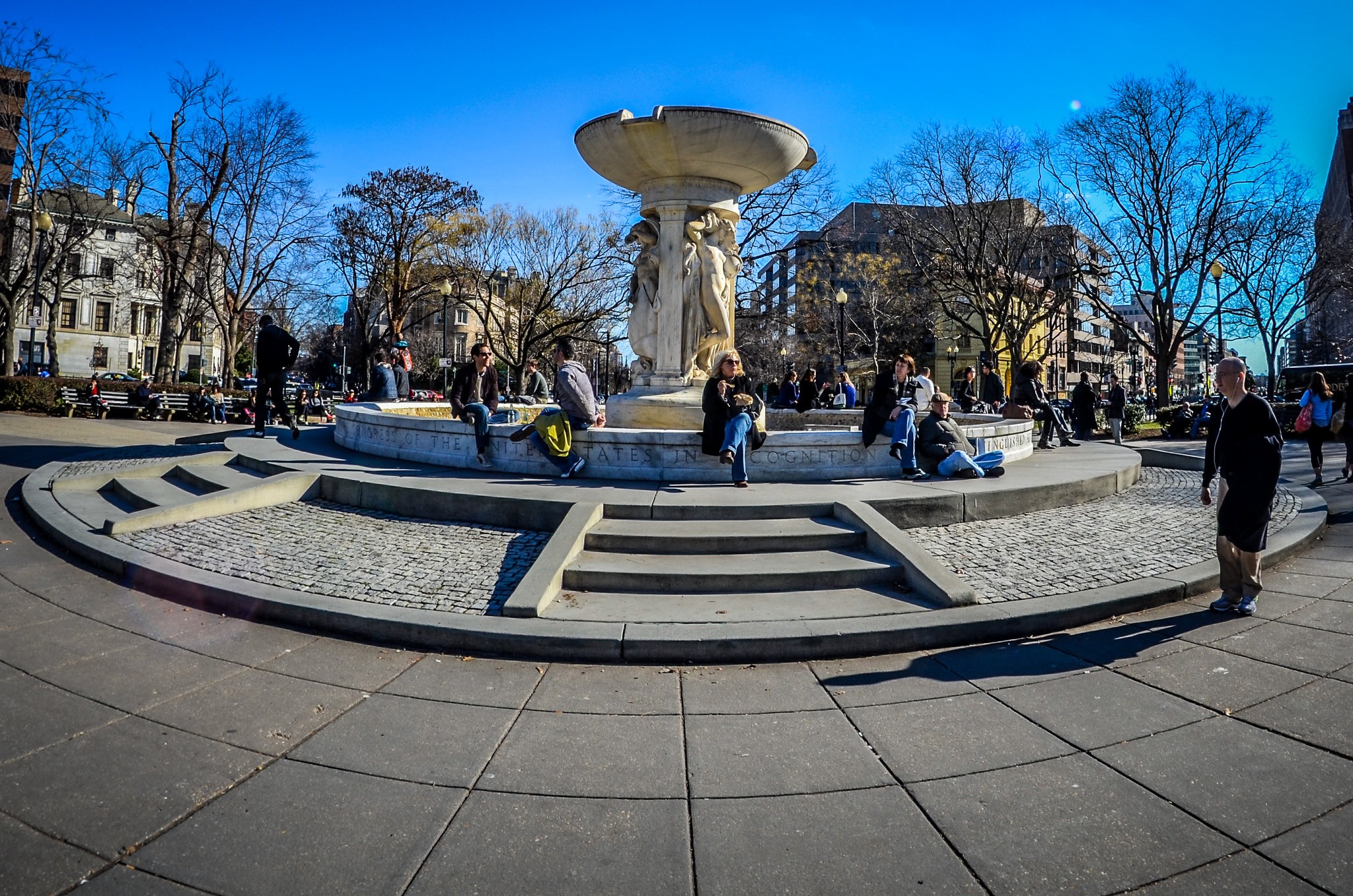
Dupont Circle is known as one of the most vibrant, artistic, and socially active centers of Washington D.C. Located in the northwest of the city center, the neighborhood takes its name from the circular plaza with a marble fountain at its center. The surrounding historic buildings, embassies, and tree-lined streets give Dupont Circle a sophisticated atmosphere. With an intellectual legacy, the area has long been a gathering place for writers, thinkers, and activists.
The neighborhood is filled with art galleries, independent bookstores, cafés, and boutique shops. The Phillips Collection, in particular, attracts fans of modern art. While offering cultural and coffee experiences during the day, the area comes alive in the evening with bars, pubs, and live music venues. With its social and cultural diversity, Dupont Circle is an essential stop for anyone seeking an energetic and colorful D.C. experience that appeals to people from all walks of life.
15. Union Station – A historic train station and shopping area.
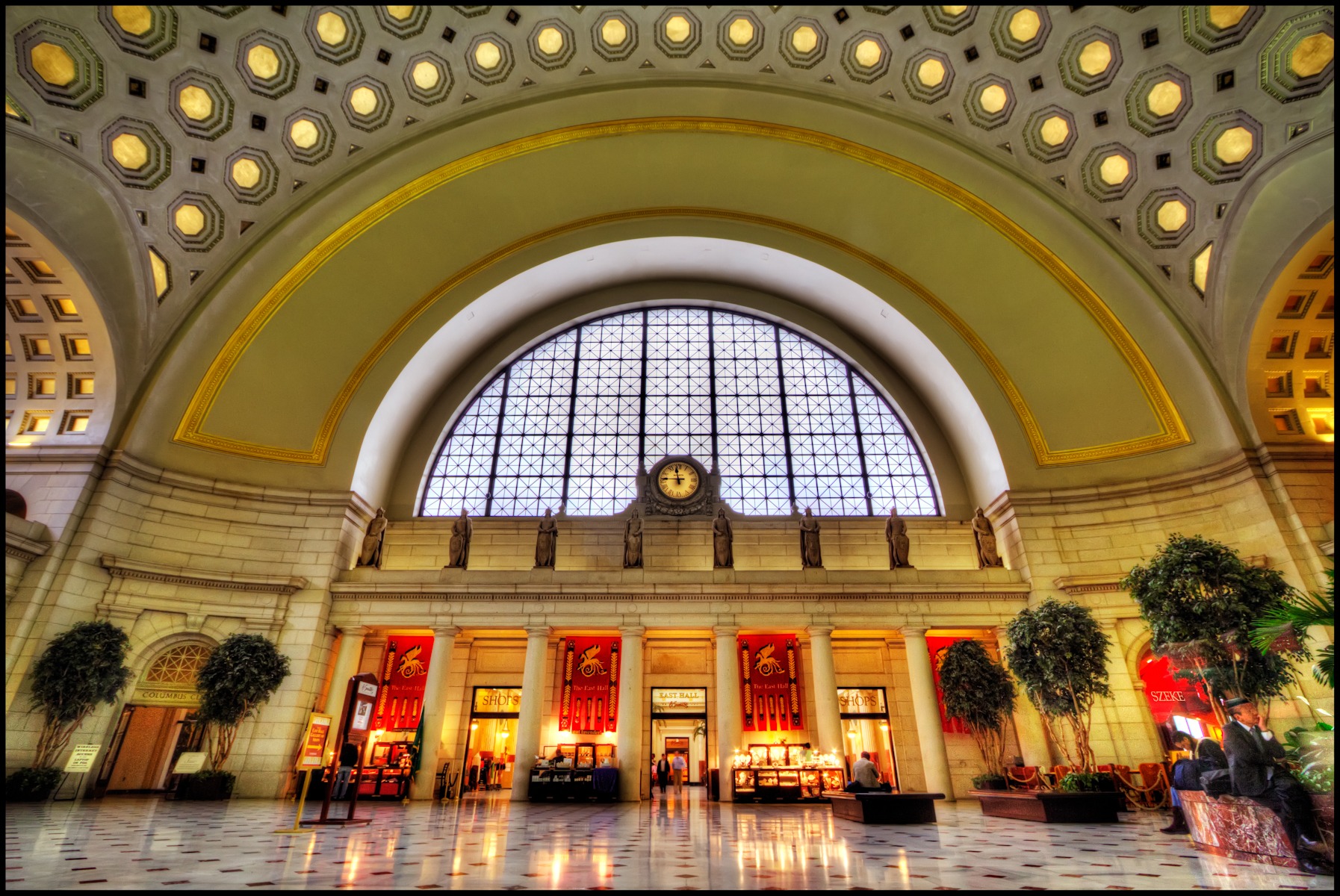
Union Station is not only one of Washington D.C.’s most important transportation hubs but also a magnificent structure known for its history and architecture. Opened in 1907, this train station was built in the Beaux-Arts architectural style and resembles a palace with its elegant columns, high ceilings, and gold-leaf details. Serving as a central point for Amtrak trains, metro lines, and bus routes, Union Station is a key connection between the capital and other major cities.
Beyond being a transportation center, Union Station also features a large shopping and dining area. Inside, stores offer a variety of products from clothing to souvenirs, while cafés and restaurants provide rest opportunities for travelers and visitors. With an interior that is as aesthetic as its exterior, this historic train station is a must-see for both locals and tourists, offering both architectural beauty and practical convenience. It also hosts periodic exhibitions and cultural events.
16. National Archives – The place where documents like the Declaration of Independence and the Constitution are on display.
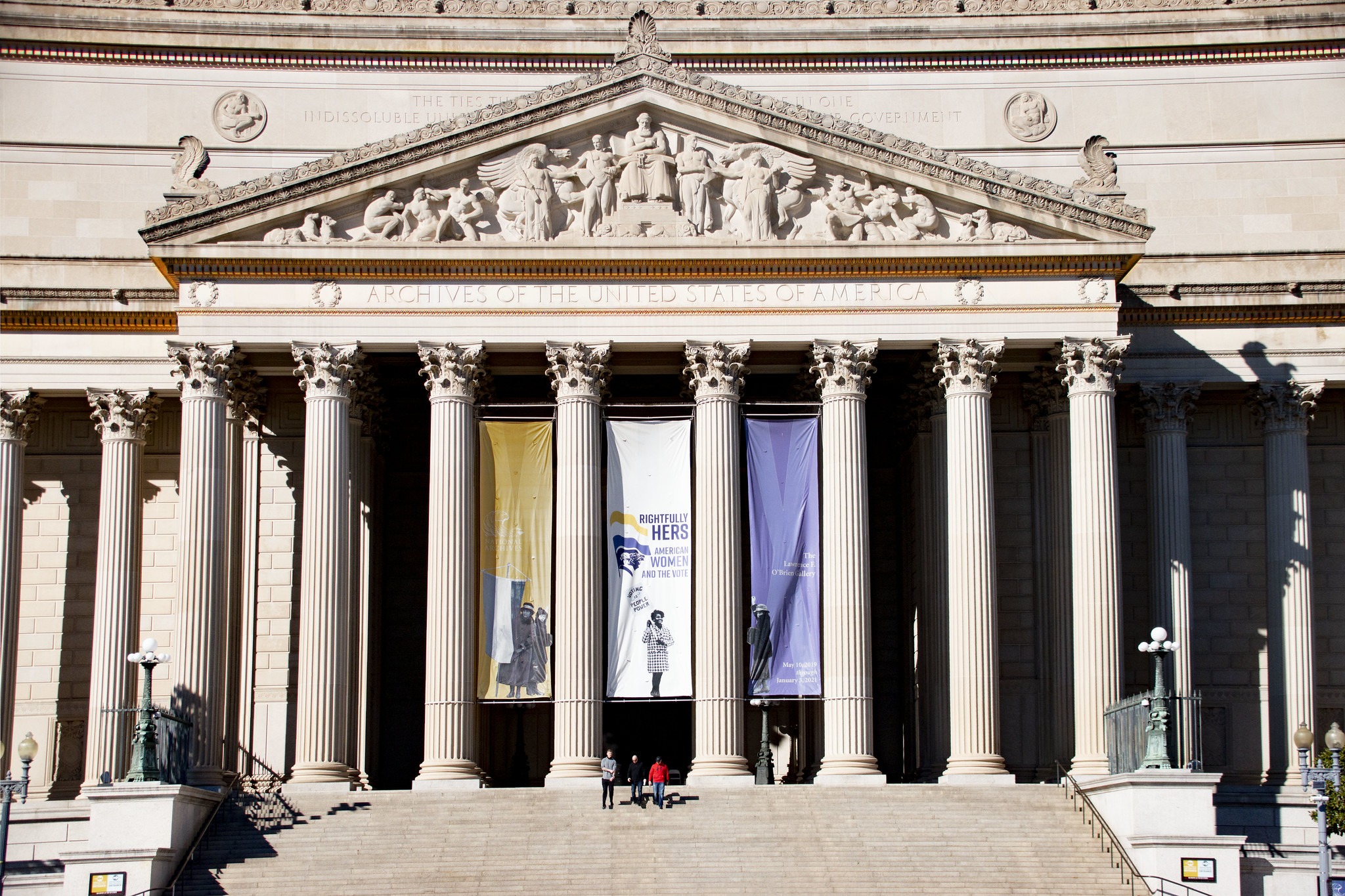
The National Archives is the official institution where the most important documents that form the historical and constitutional foundations of the United States are preserved and displayed. Located near the National Mall in Washington D.C., this grand building is a popular destination for visitors who want to see founding documents such as the Declaration of Independence, the Constitution, and the Bill of Rights. These documents are displayed under glass in a specially climate-controlled room called the Rotunda for the Charters of Freedom.
The National Archives houses not only these founding documents but also millions of historical records, including presidential orders, war reports, census data, photographs, and maps. Visitors can explore digital archives and access extensive information about American history. In addition to the museum section, research rooms are available for scholars and history enthusiasts. The National Archives is a unique destination for anyone seeking to understand the democratic structure of the United States and witness the traces of its history firsthand.
17. The Library of Congress – One of the largest libraries in the world.
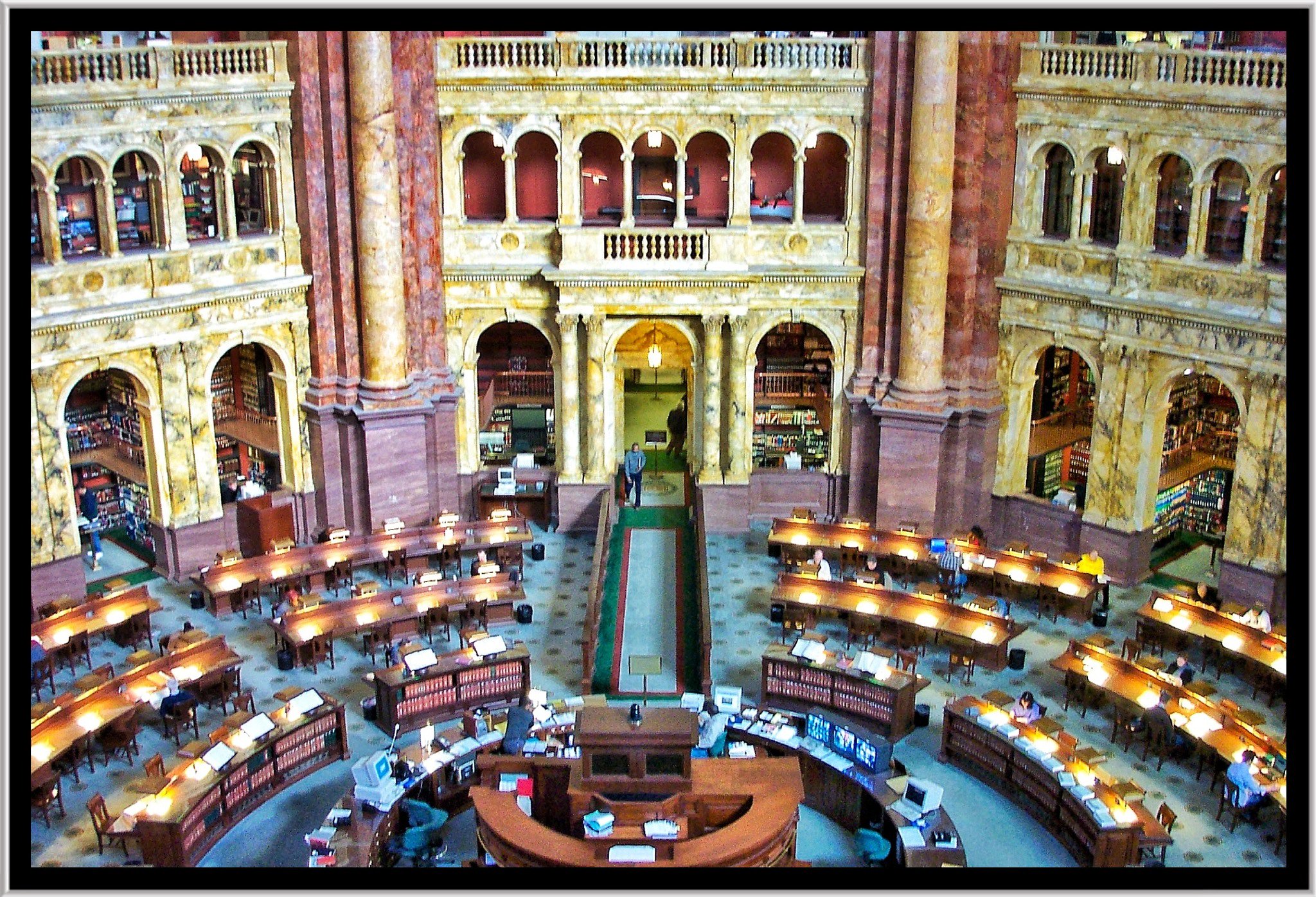
The Library of Congress is not only the largest and most comprehensive library in the United States but also one of the largest in the world. Established in 1800, this vast library is located on Capitol Hill in Washington D.C. and consists of three main buildings: the Thomas Jefferson Building, the John Adams Building, and the James Madison Building. The Thomas Jefferson Building, in particular, stands out with its elegant architecture, marble columns, ceiling decorations, and massive reading room. In addition to providing research support to the U.S. Congress, the library is also a public center for knowledge and culture.
With more than 170 million items, the library houses a wide variety of materials including books, maps, manuscripts, photographs, sound recordings, film archives, and rare documents. Among its priceless holdings are the Gutenberg Bible, Thomas Jefferson’s personal book collection, and original drafts of the U.S. Constitution. Visitors can join guided tours free of charge and explore interactive exhibits. For anyone interested in knowledge and history, the Library of Congress is an impressive and inspiring site that should not be missed in Washington D.C.
18. The Pentagon – The headquarters of the U.S. Department of Defense. (Viewable from the outside, limited tours available.)
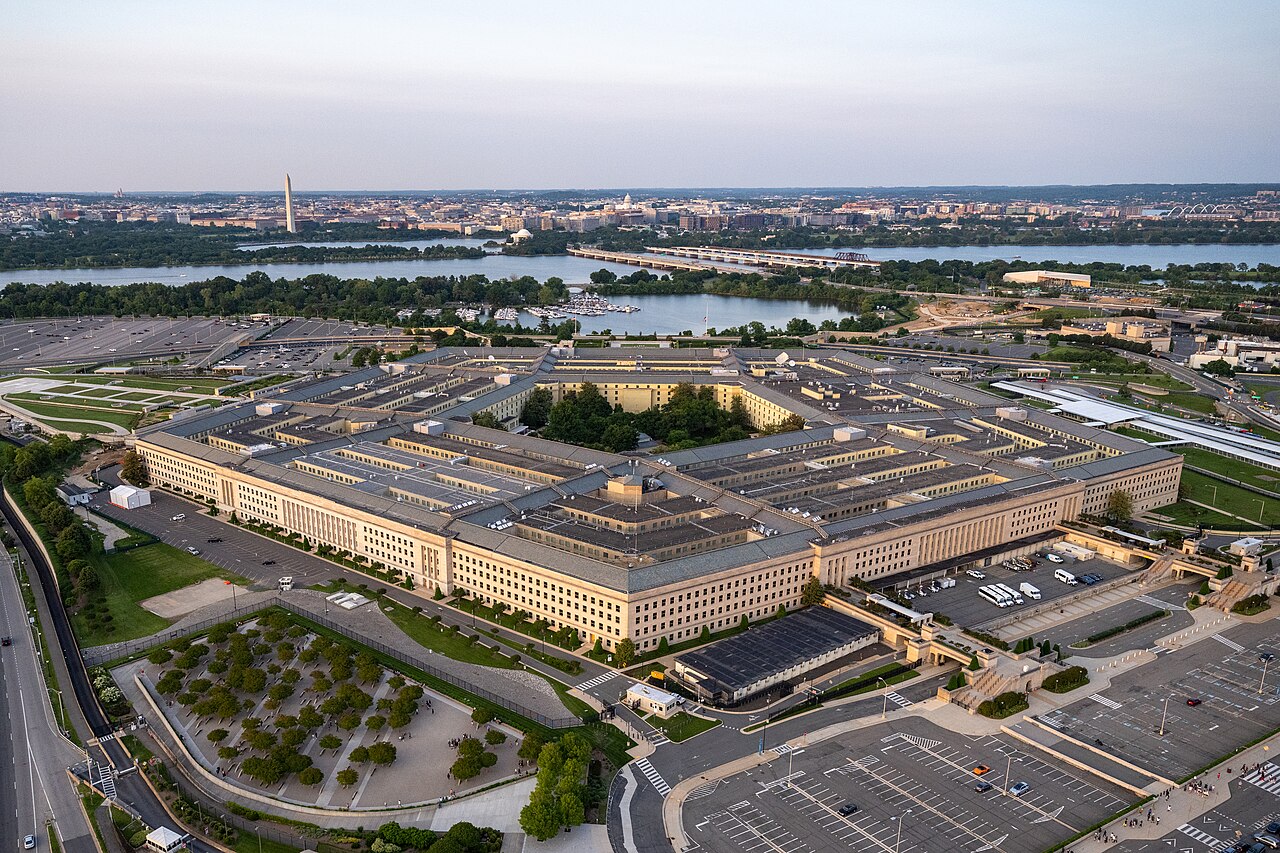
The Pentagon is a massive structure that serves as the headquarters of the United States Department of Defense and is one of the largest office buildings in the world. Completed in 1943, this five-sided building is located in the state of Virginia, just outside Washington D.C. With approximately 23,000 employees, the Pentagon is not only a military administrative center but also the core of the American defense system. Its five-sided shape is notable for both its functionality and symbolism.
Due to its high-security status, the Pentagon is generally viewable only from the outside; however, a limited number of pre-arranged guided tours are offered. These tours are available only to U.S. citizens and require thorough security screening. Visitors are typically allowed to see only a small portion of the interior and receive information about the history, structure, and mission of the U.S. military. The 9/11 Memorial located outside the building is open to the public and commemorates those who lost their lives in the 2001 attack on the Pentagon. Because of its size and symbolic significance, the Pentagon is a must-see site during a visit to Washington D.C., even if only from the outside.
19. International Spy Museum – Interactive exhibits on the history and techniques of espionage.
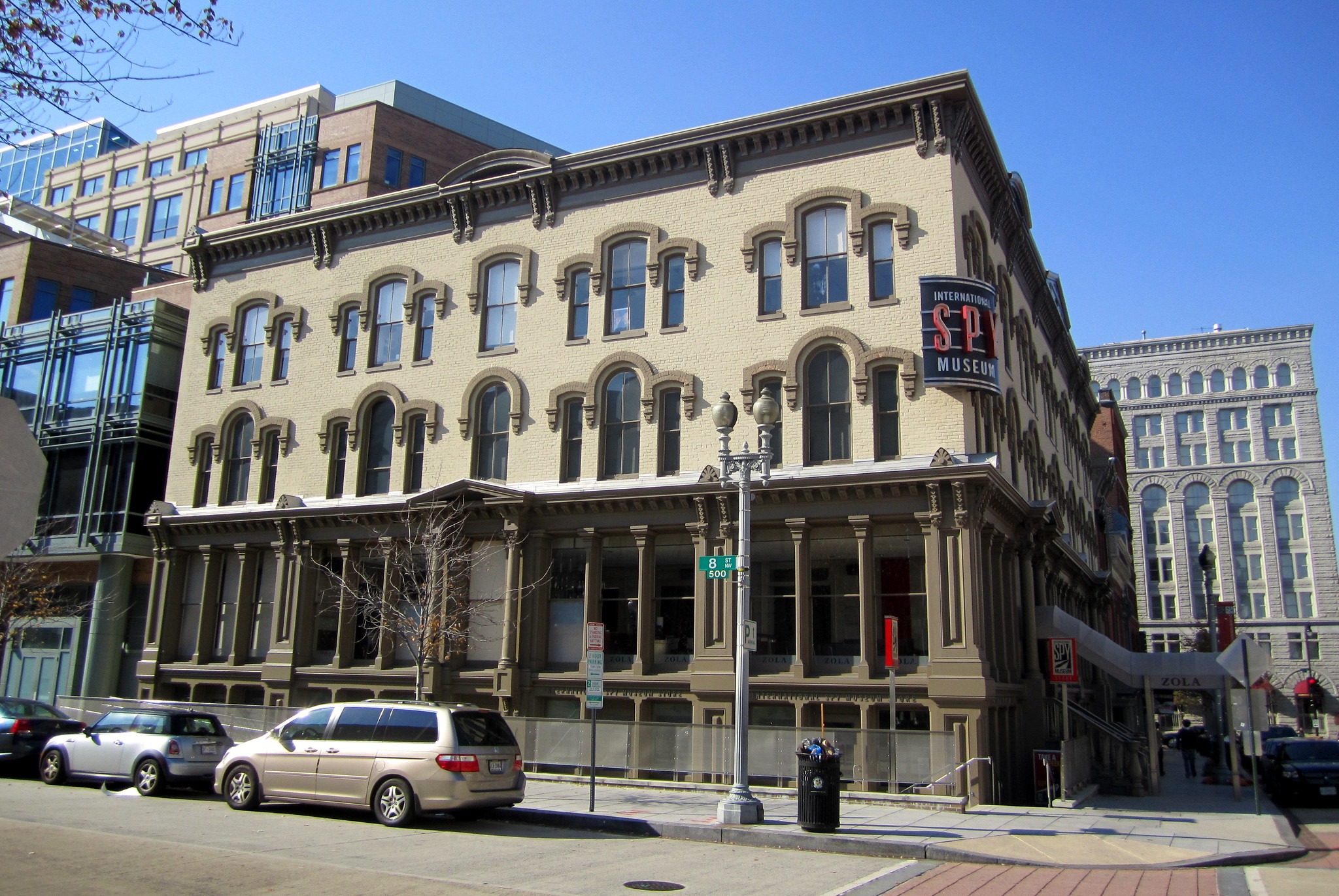
The International Spy Museum is a unique museum that reveals the mysterious, thrilling, and often dangerous aspects of the world of espionage. Located in Washington D.C., this private museum presents in detail the techniques, equipment, agent stories, and evolution of intelligence operations throughout history. Opened in 2002, the museum moved to a larger and more modern building in 2019, expanding its scope. It sheds light on both historical events and modern digital espionage techniques.
Visitors have the chance to choose their own “secret identity” and take on missions through interactive exhibits, offering an experience similar to that of a spy. Real espionage equipment used by intelligence agencies such as the KGB, CIA, MI6, and Mossad—including micro-cameras, concealed weapons, documents, and code-breaking devices—is on display. The museum also provides detailed insights into the behind-the-scenes of famous spy operations, the lives of well-known agents, and documents from the Cold War era. Informative as well as entertaining for both adults and younger visitors, the International Spy Museum is one of the most original and intriguing tourist attractions in D.C.
20. The Kennedy Center – A major cultural center for the performing arts.
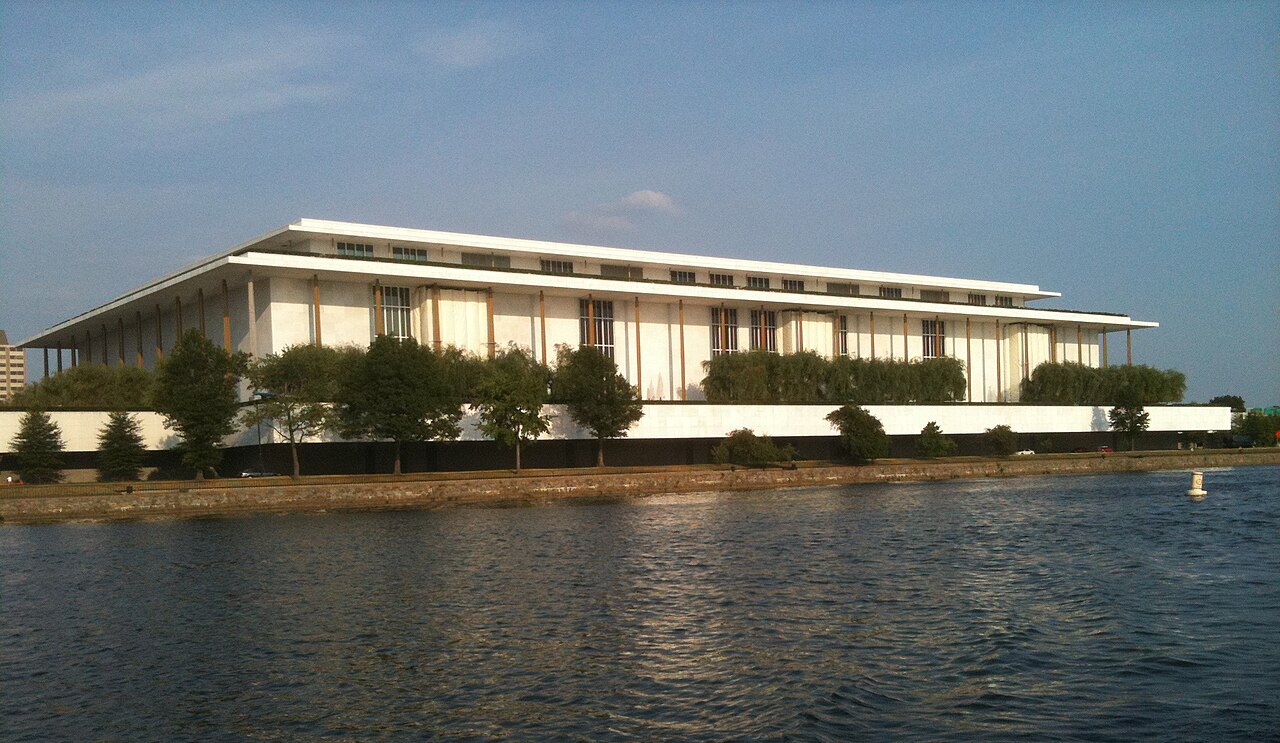
The Kennedy Center (John F. Kennedy Center for the Performing Arts) is a prestigious cultural complex located in Washington D.C. and is considered one of the most important performing arts centers in the United States. Opened in 1971, the center is named after the 35th U.S. President, John F. Kennedy, and was established to honor his interest in the arts. Situated along the Potomac River, this impressive building, with its classical architecture and spacious halls, attracts both locals and tourists.
Throughout the year, thousands of performances in opera, ballet, theater, symphony, jazz, and contemporary dance are held at the Kennedy Center. It is home to renowned arts organizations such as the National Symphony Orchestra, Washington National Opera, and the Suzanne Farrell Ballet. Visitors can explore the architecture and backstage areas through free guided tours. In addition, the regularly held Millennium Stage events, which offer free public concerts, are very popular. The Kennedy Center is a symbolic venue that reflects the cultural spirit of the city and aims to make the arts accessible to everyone.
